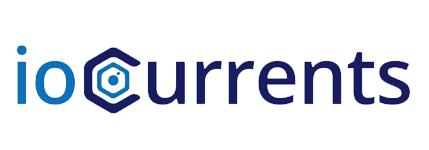From tankers and bulk carriers to tugs, workboats and offshore support vessels, owners have benefited from the insight from internet of things, artificial intelligence (AI) and machine learning (ML) in onboard maintenance and analysis programs.
ioCurrents’ MarineInsight brings together AI-based predictive maintenance, condition-based maintenance and onboard energy efficiency optimisation.
It combines data from sensors that monitor engines, generators, fluid level, GPS location and other critical equipment and displays it in a time series on ioCurrent’s web portal.
ioCurrents co-founder Cosmo King says the platform displays outputs against equipment manufacturer’s optimal operating parameters.
This enables seafarers and onshore personnel to identify any problems arising from equipment exceeding these performance levels so corrective action can be taken before a serious incident occurs.
“We know that our customers want outputs they can immediately act upon to ensure their vessels are operating at optimal levels,” says Mr King. “They are not interested in the technology used to analyse the data. We can react quickly to our clients’ requirements as we are flexible and adaptable,” he says.
Data can be viewed from multiple sensors monitoring different equipment, such as engine temperature. Data can be assessed with regards to other interrelated systems such as oil pumps and generators.
MarineInsight uses AI and ML to refine alerts by analysing data to build models predicting likely future events, such as equipment failures or replacement parts.
“This allows for a properly planned maintenance schedule to be devised to minimise any unexpected issues that could interrupt the normal functioning of the vessel, losing valuable time and increasing costs,” says Mr King.
“The same is true for voyage optimisation, as the system considers weather, speed, time and location data from GPS, and wind information from an anemometer and wind vane,” he continues.
“This all combines to recommend optimal settings for the engine and associated systems –resulting in a dramatic reduction in fuel consumption and emissions while staying within or even reducing voyage time.”
MarineInsight can be self-installed on board. Vessel operators can select various options to increase their data analysis and predictive models depending on what outputs they require.
IoCurrents has installed its systems on offshore support vessels, tugboats, bulk carriers and tankers for data analysis. Mr King says a workboat owner installed MarineInsight in 2017 after it encountered four to five high-pressure fuel pump failures every year. “After installing the ioCurrents system there have been no failures,” says Mr King. “This is just one area where proper data analysis can improve performance and have a positive effect on return on investment.”
Virtual storage
StarWind developed a virtual storage area network (VSAN) as software installed on customers’ servers. It can be configured for the maritime industry to enable fleet management software.
“The main goal behind StarWind is to provide high availability for operators to run any applications on top of it,” says StarWind chief executive, chief technology officer and chief architect Anton Kolomyeytsev.
StarWind VSAN is hardware-agnostic, software-defined storage (SDS) that can be installed on any industry-standard server.
“It helps maritime companies to create highly available clusters for their applications and services,” says Mr Kolomyeytsev.
StarWind VSAN is an SDS solution that synchronously replicates storage between two or more servers. “Thus, allowing operators to configure a hyperconverged or converged architecture,” he explains.
Storage created by StarWind VSAN can be connected to any industry-standard hypervisor using the internet small-computer systems interface (iSCSI) protocol.
“The main idea behind StarWind VSAN implementation on vessels is to create a highly available cluster that allows withstanding a failure of multiple components,” says Mr Kolomyeytsev, “thus providing higher uptime for the applications.”
“As an example, one of our customers runs a two-node hyperconverged cluster where StarWind provides high availability (HA) storage for VMware vSphere.”
This customer has located its applications on top of the HA storage. “This led to an applications uptime increase and the ability to safely run them at sea worldwide,” says Mr Kolomyeytsev.
StarWind as an SDS manages data and application storage. “In most cases, operators only need to set it up once and forget about it,” he explains. “They do not need to check or administrate it every day, since it is running in the background, doing its job.
“It has a really simple and convenient management console that enables creating and replicating storage between multiple nodes.” StarWind VSAN does not depend on the software running on top of it. “Operators can run databases, fileservers, generic virtual machines, video surveillance and other applications,” says Mr Kolomyeytsev.
Fleet e-procurement
Other fleet management software solutions have been further developed in 2021. ABS Nautical Systems and iMarine Software e-procurement have expanded their partnership to strengthen procurement solutions via Amazon Web Services’ cloud-based e-platform SeaProc.
ABS Nautical Systems president Evan Gooch says this partnership will “redefine the procurement process” within SeaProc. “Together, we look forward to delivering embedded intelligence with a single platform for trading partner collaboration and unified integration,” he says.
New functions will be added, advising on future regulatory requirements and application process interfaces for handling and managing orders and enquiries.
SeaProc connects ship operators with more than 60,000 vendors globally. It can manage and monitor technical trading, including contract management, e-invoicing, logistics, business reporting and trading rule management, in a scalable and secure environment.
Bass has unveiled BASSnet 2.11, a major overhaul of the software with multiple process improvements, new installation technology and a business intelligence dashboard.
Changes were driven by customer feedback and changing industry regulationsand cover its procurement and logistics, maintenance and drydocking and crew management module; health, safety, environment and quality functions.
Jotun combined its extensive coating data with remote hull cleaning technology into its HullKeeper optimisation programme. Ship operators can use hull monitoring, fouling risk alerts, inspections and advisory services.
HullKeeper uses Jotun’s fouling risk algorithm and data to make fouling control and efficiency more predictable. It provides insight into issues before they occur, enabling ship operators to take corrective action.

